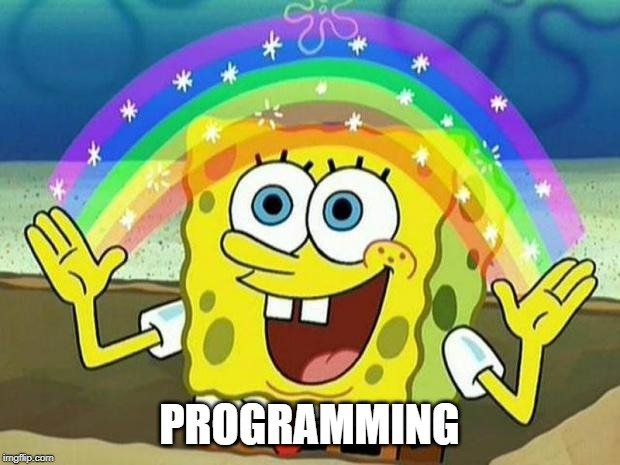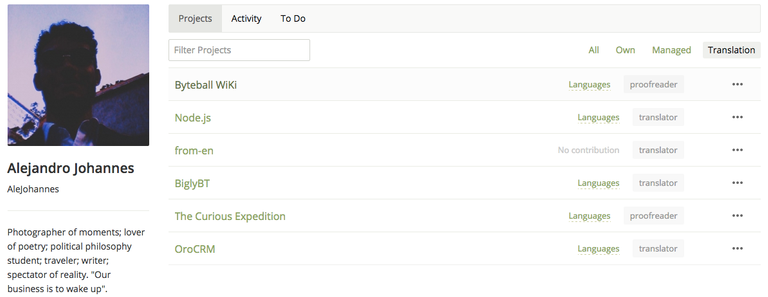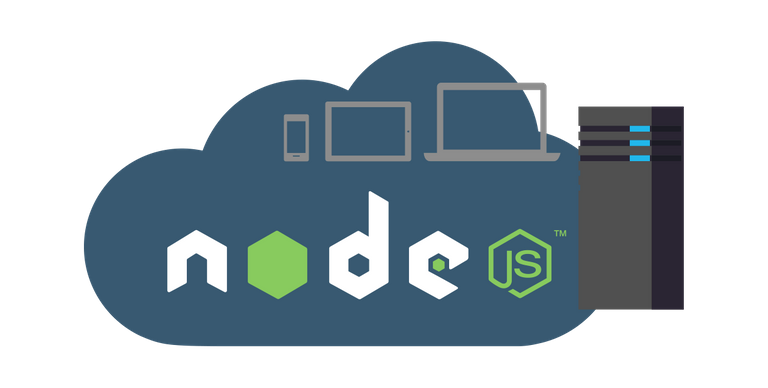Github Repository
https://github.com/nodejs/i18n
Project Details
By definition, Node.js is a Java Runtime Environment (JRE). But it is more than just that. While common JREs function as machine backups that allow users to smoothly run JavaScript on their browsers and applications, this open-source project functions as an app that manages Java code by itself. It's practical uses for developers are endless. It grants an extraordinarily versatile platform for designing code, programs, websites and other applications. And that isn't all: Node provides a virtual facility for testing the proper work of Java-driven programs and devices –and their planned updates–, helping to find bugs, solve errors, fix code and vastly improving their performance.
I believe all the amazing uses of Node are to be considered by themselves and I declare myself a fan of the project. But, besides, I support it for its functionality as a medium for bringing to reality countless creations that can be as good as Node itself. If you can dream it –and code it in JavaScript–, then your imagination is the only limit!The open translation of Node to thirty-three (33) languages proves the advantages of open-source projects when it comes to diversification of knowledge and worldwide spreading of useful tools.
Ahead, there is the link of the program's webpage:
Contribution Specifications
Translation Overview
This is my 43rd contribution to Node.js as a translator. For this collaboration, I continued my previous work on Node.js’ version 6 url.md file, which describes the features, characteristics and uses of url module of Node.
In my previous contribution, i talked about APIs and WHATWG, since they're introduced in the document from the begining:
The url module provides two APIs for working with URLs: a legacy API that is Node.js specific, and a newer API that implements the same WHATWG URL Standard used by web browsers.
In this contribution, I'll explain a important concepts referred in the WHATWG URL API of the url module.
The first one I'll talk about is hash. It is included as a property of the URL class, as url.hash. What does hash mean? Hashing is a data processing mechanism through which a long string of data is transformed into a way shorter string that represents the original one. Reducing a single string might not seem like a big deal, but it comes quite handy at the time we start dealing with enormous amounts of digital information or just wanna have a quicker, more organized, look of the data we have to work with.
If we simplify this concept to a maximum extent... It is like a programming shrink ray!:

Secondly, I would like to discuss what is percent-encoding since many strings of this document refer to this concept at the time of dealing with invalid characters in properties:
- Invalid URL characters included in the value assigned to the
hashproperty are percent-encoded.- Invalid URL characters included in the value assigned to the
passwordproperty are percent-encoded.- Any invalid URL characters appearing in the value assigned the
searchproperty will be percent-encoded.
Percent-encoding is a programming mechanism to encode 8-bit characters into URL-readable data. This way, certain characteres that do not exist within the range of URL universe manage to pass in it and later be translated by web browsers and pages. The mechanism for this codification is to substitute the unavaible character by a % symbol and, next to it, the hexadecimal representation of the ASCII value of said character.
The characters that need percent encoding are :, /, ?, #, [, ], @, !, $, &, ', (, ), *, +, ,, ;, = and % (oh, the irony).

The respective codification for each is the following (thanks, Mozilla, for making such dinamic and useful manuals... Big time!):
Finally, I would like to talk about serialization. In this file, there are a lot of references to URL and domain serialization, as:
- The
toJSON()method on theURLobject returns the serialized URL. - Returns the search parameters serialized as a string, with characters percent-encoded where necessary.
- Returns the Punycode ASCII serialization of the
domain. - Returns the Unicode serialization of the
domain.
In computer science, the process of serialization refers to the mechanism through which a piece of data or an object is transformed into a format that can be buffered or saved in the physical memory of a system as a file. In the case of Java, the objects are turned into byte streams, which can later be changed again into copies of the original objects. It's not magic...

It's just programming.
You can find out more about the aforementioned concepts here:
- https://searchsqlserver.techtarget.com/definition/hashing
- https://www.i-programmer.info/babbages-bag/479-hashing.html
- https://www.hackerearth.com/practice/data-structures/hash-tables/basics-of-hash-tables/tutorial/
- https://developer.mozilla.org/en-US/docs/Glossary/percent-encoding
- https://www.w3schools.com/tags/ref_urlencode.asp
- https://en.wikipedia.org/wiki/Percent-encoding
- https://docs.microsoft.com/en-us/dotnet/csharp/programming-guide/concepts/serialization/
- https://docs.oracle.com/javase/tutorial/jndi/objects/serial.html
- https://en.wikipedia.org/wiki/Serialization

Thanks for taking your time to read! Expect more information and tips on the next report :)

Work example #01:
English:
Setting the value to the default port of the URL objects given protocol will result in the port value becoming the empty string ''.
Spanish:
Establecer el valor del puerto predeterminado del protocol dado de los objetos URL ocasionará que el valor del port se convierta en la string vacía ''.
Work example #02:
English:
Note that the selection of which characters to percent-encode may vary somewhat from what the [url.parse()][] and [url.format()][] methods would produce.
Spanish:
Tenga en cuenta que la selección de los caracteres a ser codificados porcentualmente puede ser distinta de la que los métodos [url.parse()][] y [url.format()][] producirían.
Work example #03:
English:
That means iterable can be another URLSearchParams, in which case the constructor will simply create a clone of the provided URLSearchParams.
Spanish:
Eso significa que iterable puede ser otro URLSearchParams, en cuyo caso el constructor simplemente creará un clon del URLSearchParams proporcionado.
Languages
This translation was made from English to Spanish.
I got plenty experience translating and proofreading this project as an Utopian contributor. I collaborate here as translator and Language Moderator of the Da-Vinci/Utopian Spanish translation team. Besides this project, I have experience translating and proofreading The Curious Expedition, Ancap-ch, Byteball Wiki, OroCrm and BiglyBT.
Word Count
- The amount of words translated in this contribution is: 1,218.
Note: This number is the result of subtracting the complete sum of non-translatable content to the word-count Crowdin has done for the period in which this contribution was done.
- The total amount of words translated in this project (as a Da-vinci/Utopian translator) is: 53,451.
Previous Translations of the Project
- Contribution N'01. Submitted on September 13th, 2018.
- Contribution N'02. Submitted on September 15th, 2018.
- Contribution N'03. Submitted on September 17th, 2018.
- Contribution N'04. Submitted on September 19th, 2018.
- Contribution N'05. Submitted on September 21th, 2018.
- Contribution N'06. Submitted on September 22th, 2018.
- Contribution N'07. Submitted on September 23th, 2018.
- Contribution N'08. Submitted on October 1st, 2018.
- Contribution N'09. Submitted on October 8th, 2018.
- Contribution N'10. Submitted on October 14th, 2018.
- Contribution N'11. Submitted on October 15th, 2018.
- Contribution N'12. Submitted on October 18th, 2018.
- Contribution N'13. Submitted on October 21st, 2018.
- Contribution N'14. Submitted on October 24th, 2018.
- Contribution N'15. Submitted on October 27th, 2018.
- Contribution N'16. Submitted on October 31th, 2018.
- Contribution N'17. Submitted on November 3rd, 2018.
- Contribution N'18. Submitted on November 4th, 2018.
- Contribution N'19. Submitted on November 6th, 2018.
- Contribution N'20. Submitted on November 17th, 2018.
- Contribution N'21. Submitted on November 24th, 2018.
- Contribution N'22. Submitted on December 7th, 2018.
- Contribution N'23. Submitted on December 15th, 2018.
- Contribution N'24. Submitted on December 20th, 2018.
- Contribution N'25. Submitted on December 26th, 2018.
- Contribution N'26. Submitted on December 28th, 2018.
- Contribution N'27. Submitted on December 30th, 2018.
- Contribution N'28. Submitted on January 9th, 2019.
- Contribution N'29. Submitted on January 10th, 2019.
- Contribution N'30. Submitted on January 12th, 2019.
- Contribution N'31. Submitted on January 18th, 2019.
- Contribution N'32. Submitted on January 19th, 2019.
- Contribution N'33. Submitted on January 24th, 2019.
- Contribution N'34. Submitted on January 28th, 2019.
- Contribution N’35. Submitted on January 31st, 2019.
- Contribution N’36. Submitted on March 3rd, 2019.
- Contribution N’37. Submitted on March 6th, 2019.
- Contribution N’38. Submitted on April 3rd, 2019.
- Contribution N’39. Submitted on April 16th, 2019.
- Contribution N’40. Submitted on April 19th, 2019.
- Contribution N’41. Submitted on May 28th, 2019.
- Contribution N’42. Submitted on July 8th, 2019.
Proof of Authorship
This translation was made on July 9th, 2019. You can check the translation record in my Crowdin account [here], the activity on the project's Crowdin [here] and a summary of recent additions to the project [here].



Hi @alejohannes,
Congratulations on a new contribution!
This is a very interesting project that contains many code values and terms related to computer science. Its difficulty relies on the fact that we must pay a lot of attention to the code in order to deliver the most accurate translation possible.
The overall presentation of your post is great! It is well written and formatted, includes all the basic details, useful examples and concepts.
You delivered an accurate translation. You used the correct vocabulary and you were careful with code values that should not be translated in order to make sure the text keeps its true meaning.
I'm looking forward to your next contribution :D
Your contribution has been evaluated according to Utopian policies and guidelines, as well as a predefined set of questions pertaining to the category.
To view those questions and the relevant answers related to your post, click here.
Chat with us on Discord
Thank you for your review, @marugy99! Keep up the good work!
Hi @alejohannes!
Your post was upvoted by @steem-ua, new Steem dApp, using UserAuthority for algorithmic post curation!
Your post is eligible for our upvote, thanks to our collaboration with @utopian-io!
Feel free to join our @steem-ua Discord server
Hey, @alejohannes!
Thanks for contributing on Utopian.
We’re already looking forward to your next contribution!
Get higher incentives and support Utopian.io!
Simply set @utopian.pay as a 5% (or higher) payout beneficiary on your contribution post (via SteemPlus or Steeditor).
Want to chat? Join us on Discord https://discord.gg/h52nFrV.
Vote for Utopian Witness!